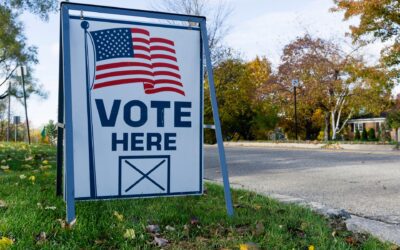Donald Trump’s unpopularity, beliefs, values and leadership qualities are forging a new 2016 battleground for the election of the President and U.S. Senate. Trump and Clinton no longer face symmetric image problems. With 60 percent viewing Trump unfavorably and half of presidential year voters saying they will never vote for him, he is losing Republican support to Libertarian candidate Gary Johnson and college educated voters to Clinton and the Democrats. Trump is helping Clinton consolidate Democrats, unmarried women, and minority voters.
As a result, Trump’s Rustbelt strategy is faltering badly. He is losing to Clinton by 8 points across the Rustbelt battleground states and runs no better than Mitt Romney in Wisconsin, Michigan and Pennsylvania. But more important, Clinton is beating Trump by 8 points in the more demographically diverse battleground states, outperforming Obama in Florida by 10 points, North Carolina by 13 points, and Arizona by 4 points. That grows the Electoral College map for Democrats and produces an Electoral College earthquake.
These results understate what is possible for Clinton because the Bernie Sanders and Millennial vote is not yet fully consolidated behind her. Johnson is winning 22 percent of the millennial vote, though the building Democratic unity and endorsements may erode that.
The Libertarian Party will likely be a long-term factor in the race. Not surprisingly, Johnson is getting 24 percent of independents. But on the right, he is also winning 11 percent of Romney voters, 26 percent of Kasich supporters (and 21 percent of all non-Trump GOP primary supporters), and 23 percent of GOP-moderates. On the left, he is winning 17 percent of Sanders primary voters, 25 percent of white millennials, and 10 percent of unmarried women. But ask yourself: do you think the right or the left will be more successful uniting behind a candidate in the coming month?
The results also understate what is possible down-ballot. Trump is only winning 38 percent of the vote across the Senate battleground, and that creates a lot of uncertainty. The Republican brand is badly tarnished – nationally and in the states where the GOP has control. All the Republican Senate candidates are under 50 percent and North Carolina and Arizona incumbents may be in reach. Plus, one-quarter of those voting Republican in the U.S. Senate race in their state say they are certain to change their vote and support the Democrat when learning of the Republicans’ position on abortion, guns and gay marriage.[1] Because the 2016 pesidential battleground is so friendly, Democratic Senate candidates can target the one-in-ten voters who are now voting for Clinton, but not yet supporting the Democratic Senate candidates and other down-ballot Democrats.
This survey on behalf of WVWVAF and VPC provides an unprecedented look at these dynamics because of the very large sample of 2,700 interviews – 300 presidential year voters from a voter file in 9 states – in the 5 Rustbelt states that Trump has targeted and 4 states with growing racial diversity and cosmopolitan populations that are increasingly open to Democrats.[2]

[1] In Michigan, this question was asked of those who did not identify as Democrats.
[2] On behalf of Women’s Voice. Women’s Vote Action Fund and the Voter Participation Center, Democracy Corps conducted a nine-state battleground survey of 2700 likely voters from June 11th – 20th. Three hundred cases were completed in each state: Arizona, Florida, Michigan, Nevada, North Carolina, New Hampshire, Ohio, Pennsylvania, and Wisconsin. The margin of error for the entire survey is +/- 1.89 percent at the 95 percent confidence level. The margin of error within each state is +/-5.66 percentage points. Margin of error is higher among subgroups.




